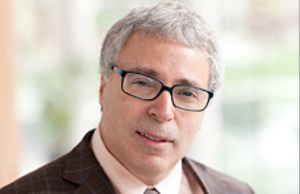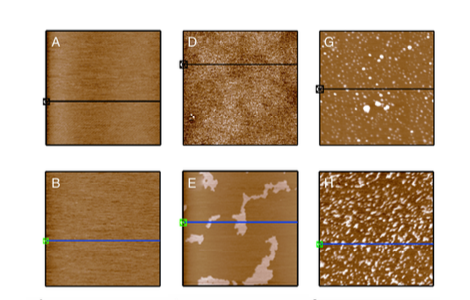USA: Nir Barzilai (Technion, Hadassah), the man who wants to beat back aging

sciencemag.org. On a blazingly hot morning this past June, a half-dozen scientists convened in a hotel conference room in suburban Maryland for the dress rehearsal of what they saw as a landmark event in the history of aging research. In a few hours, the group would meet with officials at the U.S. Food and Drug Administration (FDA), a few kilometers away, to pitch an unprecedented clinical trial—nothing less than the first test of a drug to specifically target the process of human aging.
“We think this is a groundbreaking, perhaps paradigm-shifting trial,” said Steven Austad, chairman of biology at the University of Alabama, Birmingham, and scientific director of the American Federation for Aging Research (AFAR). After Austad’s brief introductory remarks, a scientist named Nir Barzilai tuned up his PowerPoint and launched into a practice run of the main presentation.
Barzilai is a former Israeli army medical officer and head of a well-known study of centenarians based at the Albert Einstein College of Medicine in the Bronx, New York. To anyone who has seen the ebullient scientist in his natural laboratory habitat, often in a short-sleeved shirt and always cracking jokes, he looked uncharacteristically kempt in a blue blazer and dress khakis. But his practice run kept hitting a historical speed bump. He had barely begun to explain the rationale for the trial when he mentioned, in passing, “lots of unproven, untested treatments under the category of anti-aging.” His colleagues pounced.
“Nir,” interrupted S. Jay Olshansky, a biodemographer of aging from the University of Illinois, Chicago. The phrase “anti-aging … has an association that is negative.”
“I wouldn’t dignify them by calling them ‘treatments,’” added Michael Pollak, director of cancer prevention at McGill University in Montreal, Canada. “They’re products.”
Barzilai, a 59-year-old with a boyish mop of gray hair, wore a contrite grin. “We know the FDA is concerned about this,” he conceded, and deleted the offensive phrase.
Then he proceeded to lay out the details of an ambitious clinical trial. The group—academics all—wanted to conduct a double-blind study of roughly 3000 elderly people; half would get a placebo and half would get an old (indeed, ancient) drug for type 2 diabetes called metformin, which has been shown to modify aging in some animal studies. Because there is still no accepted biomarker for aging, the drug’s success would be judged by an unusual standard—whether it could delay the development of several diseases whose incidence increases dramatically with age: cardiovascular disease, cancer, and cognitive decline, along with mortality. When it comes to these diseases, Barzilai is fond of saying, “aging is a bigger risk factor than all of the other factors combined.”
But the phrase “anti-aging” kept creeping into the rehearsal, and critics kept jumping in. “Okay,” Barzilai said with a laugh when it came up again. “Third time, the death penalty.”
The group’s paranoia about the term “anti-aging” captured both the audacity of the proposed trial and the cultural challenge of venturing into medical territory historically associated with charlatans and quacks. The metformin initiative, which Barzilai is generally credited with spearheading, is unusual by almost any standard of drug development. The people pushing for the trial are all academics, none from industry (although Barzilai is co-founder of a biotech company, CohBar Inc., that is working to develop drugs targeting age-related diseases). The trial would be sponsored by the nonprofit AFAR, not a pharmaceutical company. No one stood to make money if the drug worked, the scientists all claimed; indeed, metformin is not only generic, costing just a few cents a dose, but belongs to a class of drugs that has been part of the human apothecary for 500 years. Patient safety was unlikely to be an issue; millions of diabetics have taken metformin since the 1960s, and its generally mild side effects are well-known.
Finally, the metformin group insisted they didn’t need a cent of federal money to proceed (although they do intend to ask for some). Nor did they need formal approval from FDA to proceed. But they very much wanted the agency’s blessing. By recognizing the merit of such a trial, Barzilai believes, FDA would make aging itself a legitimate target for drug development.
By the time the scientists were done, the rehearsal—which was being filmed for a television documentary—had the feel of a pep rally. They spoke with unguarded optimism. “What we’re talking about here,” Olshansky said, “is a fundamental sea change in how we look at aging and disease.” To Austad, it is “the key, potentially, to saving the health care system.”
As the group piled into a van for the drive to FDA headquarters, there was more talk about setting precedents and opening doors. So it was a little disconcerting when Austad led the delegation up to the main entrance of FDA—and couldn’t get the door open.
Barzilai, who is quick to see the humor (black or otherwise) in any situation, leaned over to a colleague and muttered, “I hope it’s not symbolic.”
AMIABLY AGGRESSIVE, Barzilai credits his military service with shaping his scientific temperament and administrative mettle. “The most helpful years in my life were in the Israeli army,” he says. Born in Haifa in 1955, he joined the military as a medical instructor and in 1976 served as a medical officer in the special forces raid on Entebbe, Uganda, that freed 102 hostages from a hijacked Air France airliner. (“I did nothing,” he claims. “I happened to be there.”) By his early 20s, he had been decorated for his military service and had become chief medic of the Israeli army. “I had an office, a secretary, a car, and I would do inspections with a helicopter,” he recalls. “It’s a whole lifetime, okay? With a lot of lessons. But the major thing is that you realize that you can do a lot! If it doesn’t frighten you, you can do a lot.”
After obtaining his M.D. in internal medicine from the Technion-Israel Institute of Technology in 1985, Barzilai focused on endocrinology and metabolism during several research stints in the United States. He had every intention of returning to Israel, but a fellowship at Yale University in 1987–88 upended his plans. At Yale, he studied the mechanism of several oral drugs that lowered blood sugar in diabetics. One was metformin. During his time in New Haven, Barzilai ended up meeting his wife-to-be on a blind date. Metformin, he laughs, “is the reason I’m in the United States!”
In 1993, he landed a position at Einstein and discovered, in nearby neighborhoods, a cohort of unusually long-lived Ashkenazi Jews. Barzilai and his Einstein colleagues tracked down and studied more than 600 of the “oldest old,” ranging in age from 95 to 112 years. Since then, the researchers have collected data on the genetics, epigenetics, blood chemistry, and lifestyles of both centenarians and their children…
Full article on sciencemag.org Sept 2015





